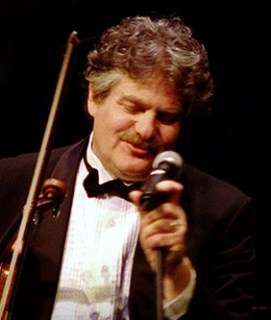|
Back
Tuesdays with Johannes - III New York
Merkin Concert Hall
06/19/2018 - & June 20, 24, 2018
Ludwig van Beethoven: Symphony No. 2 in D Major, Op. 36 (arr. Andy Stein)
Johannes Brahms: Serenade No. 1 in D major, Op. 11 (reconstruction Alan Boustead)
St. Luke’s Chamber Ensemble: Elizabeth Mann (Flute), Jon Manasse, Dean LeBlanc (Clarinets), Marc Goldberg (Bassoon), Joseph Anderer (French Horn), Krista Bennion Feeney, Jesse Mills (Violins), David Cerutti (Viola), Daire FitzGerald (Cello), John Feeney (Bass)

A. Stein
“Joyous youth, cheerful fervor and unbroken strength seem to constitute the foundations of its [the Symphony No. 2] being. To approach it in a spirit of pale reflection is to spoil it at once.”
Felix Weingartner, On the Performance of Beethoven’s Symphonies
The Serenade No. 1 in D major went through at least two comprehensive revisions and qualifies as an early example – in the category of diamond in the rough – for inclusion in St. Luke’s survey entitled “Facets of Brahms”. Although the original nonet was praised by Clara Schumann, Brahms took suggestions from Joachim that added a few more instruments into the mix. Finally at its premiere in Hanover in 1860 it emerged as a full-blown orchestral effort with a smallish ensemble including percussion. The premiere was not received well, but over time the piece became at least an early prototype for larger symphonic works to come. In 1862, the evening after the composer made his first distinct impression as a pianist, the new orchestral work was deemed a success. It lives to this day as a curiosity, neither chamber music nor exactly symphonic in nature, rather as a cheerful hybrid, here reconstructed for our listening pleasure.
But first a piece of “genetically engineered” Beethoven. Of course, this symphony is much more well-known than the Brahms in question, although is arguably the least of the glorious nine championed. Having lived in New York for the past 25 years, I am well aware that there are street and subway musicians who can replicate in great detail the classics just heard inside the major concert venues. These musicians sport a variety of instruments, from concert level violins to trombones, but each of these practitioners does the best they can to replicate the classical experience. There was even a story floating around about a Chinese concertmaster who came to visit and never went home, making as much money in a month underground as in a year on the Eastern concert stage. In the trains themselves the music tends to be more Latin American, but who can resist those gigantic guitars that are the rocks of ranchero music?
Mr. Stein’s arrangement of Beethoven 2 was serviceable as a way forward for a smallish ensemble. Five strings, a clarinet, bassoon and horn were all that was necessary to communicate the master’s thoughts in a clear and crisp manner. This method of presenting a classic might seem a bit precious, but it is worth mentioning that the hall was almost completely sold-out and the concert is to be repeated in two other venues this week.
The execution of this hybrid was notable for full-bodied playing, strong attacks and interesting – if not Beethovenian – utterances. Perhaps its best quality was that it made us all reconsider the original masterpiece in a new light. I have a dear friend from California who tends to recognize my fixation with horn players, however I would be remiss not to mention the distracting amount of slippages and errors from this instrument this night (and he was not the same man as had drawn so much attention to himself on last week’s program). Thankfully the group did not slip down into “period” style but rather played in the modern manner, transforming the piece into something fresh and interestingly new. Of special note was the jolly hunt presented in the scherzo.
For the Brahms the group presented an adaptation for nine instruments by Alan Boustead, an interesting and provocative return to the original nonet experience but now transformed into the utterances of a full-scale orchestra. The instrumentation is the Beethoven Septet plus a flute and a second clarinet. What this reviewer found fascinating was a fleshing-out of the original work with the addition of the composer/arranger aware that Brahms himself was a prestidigitator who often made his small works seem like gigantic symphonies (cf. the Piano Quartet No. 1 or the Piano Quintet). One guesses that the original composer would have approved, although he developed the reputation of being a rather crusty critic as he grew older.
A fascinating transformation to be sure, but I could not escape the fact that the Adagio non troppo was not as moving as in the “original” (a strikingly relative term in this context) full-scale instrumental version. There was a gnawing sensation that half of the orchestra was simply M.I.A and therefore there was a hole in the actual performance. Overall the playing was acceptable, but oh that horn!
The three-week series “Facets of Brahms” was informative, thought-provoking and virtually sold-out. The music was reasonably well-presented and always interesting. The crowds were intense and the players were, by and large, up to the challenge. For summer in New York, this was music-making of a very high order.
Fred Kirshnit
|